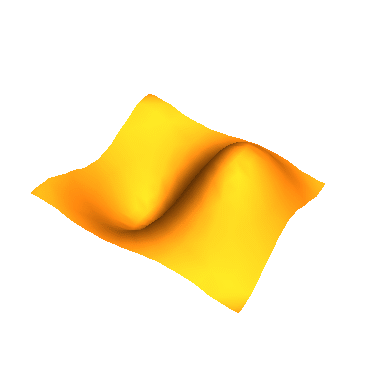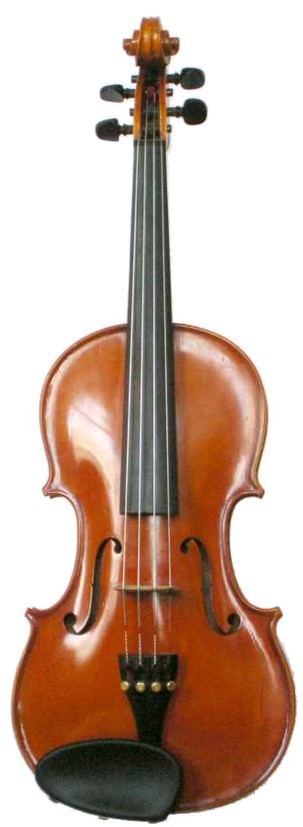
Lesson 2: Resonances in 2D
lesson 1 lesson 3 lesson 4 lesson 5
Interestingly, resonances can occur in two dimensions as well. Beat this gong by clicking on it, for example:(note that you may have to allow blocked content to do this, but don't worry, it's safe). If you can't hear the sound, you can also click the audio link here.

The sound you heard is actually a combination of many standing waves that exist on the surface of the gong.
So, how can we visualize these 2-dimensional standing waves? The first way is to calculate them, much like I did on the last page for a 1D resonance on a string. For example, here are four of the resonances of a drum membrane (or a gong):
 |
 |
 |
 |
Here the oscillation frequencies aren't realistic. Drums vibrate much faster, plus I had to use many images to make the animated gif in the fourth panel clear enough. That makes the oscillation frequency seem smaller, but in reality the fourth panel would have the highest frequency.
These drum oscillations shake the surrounding air and cause the noise we hear.
The second way to see this is to observe the pattern on a real oscillator. What you do is take a flat metal plate and scatter grains of sand on it. Then use a sound generator to "excite" the metal plate. Oscillations like the ones shown above will form if the frequency of the sound is a resonant frequency of the plate. The sand jumps around until it randomly happens to land on a "node" - that is, one of the regions of the plate that have zero motion for that particular resonance. The nodes form amazing line patterns. The good stuff in the clip below starts at 42 seconds.
|
These 2D resonances also have considerable importance in music. Take a violin, for example. The strings have certain 1-dimensional standing wave resonant frequencies which we hear as sound. The body of the violin has 2-dimensional standing waves also, and they need to occur at specific frequencies to make the violin sound right. The resonances of the body serve to amplify the sound from the strings, at specific resonant frequencies. If you click on the image on the right, you'll hear a violin with and without the body. It makes a big difference. Click here if it doesn't play for you. |
 |
On to 3D standing waves.